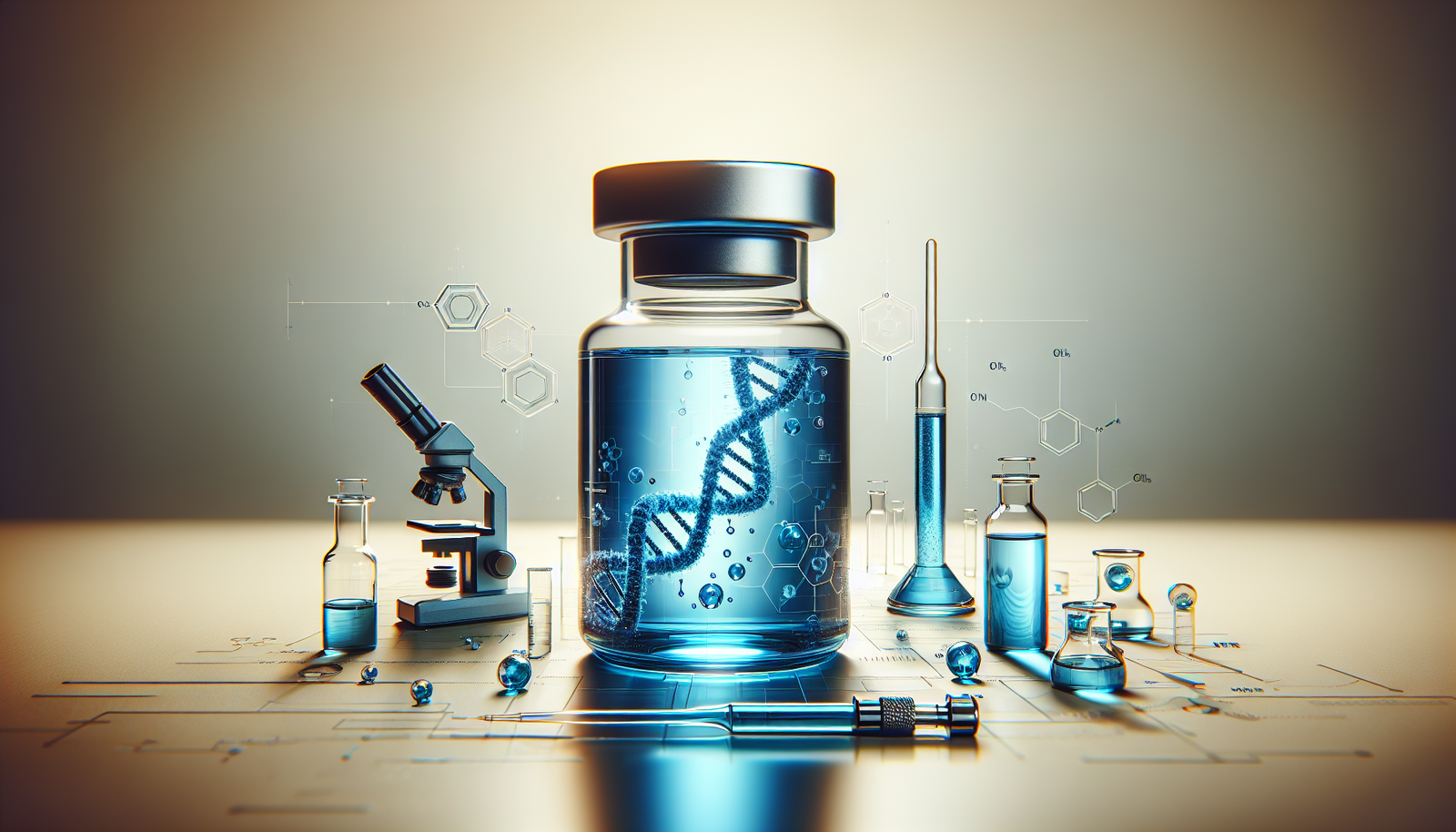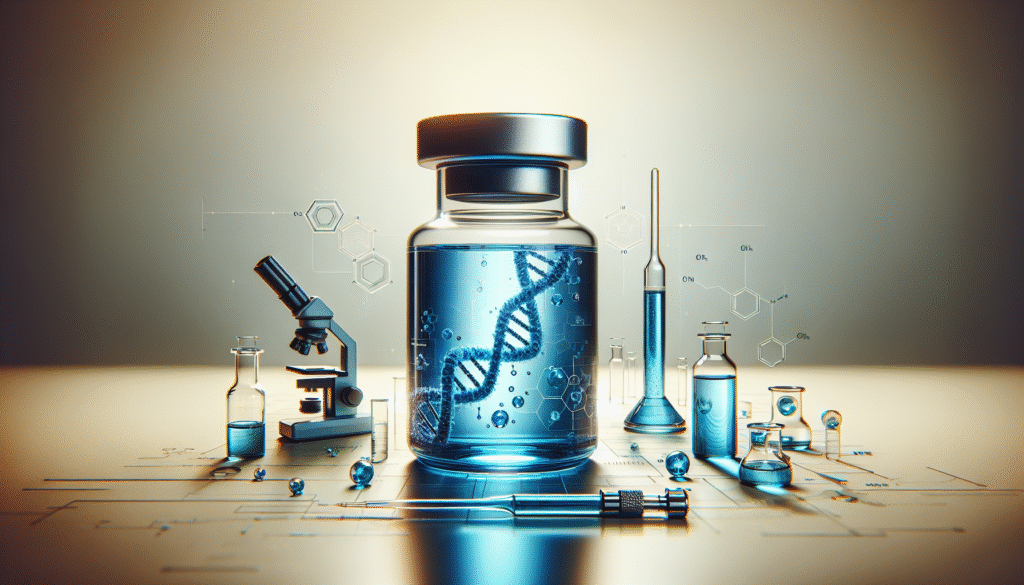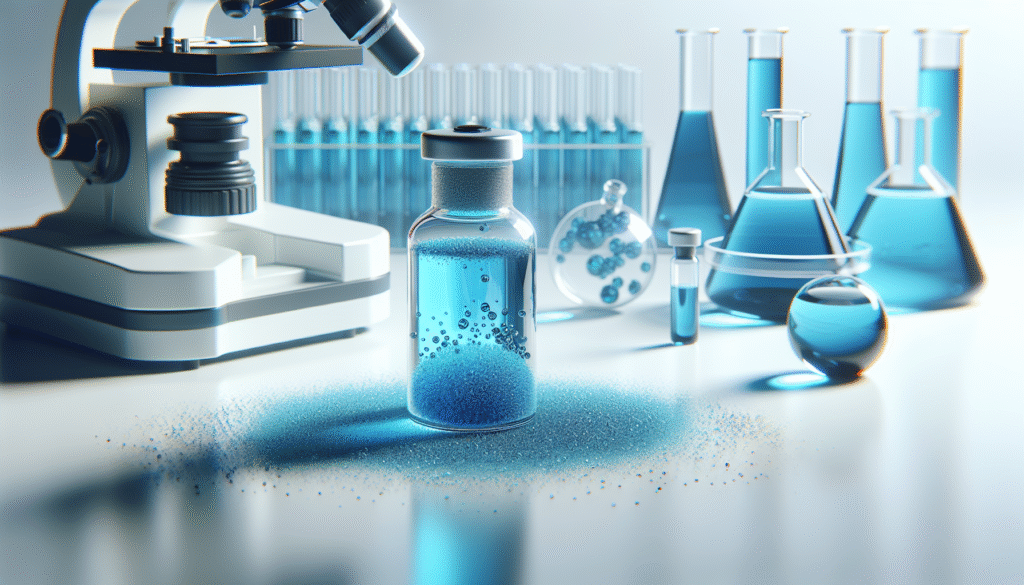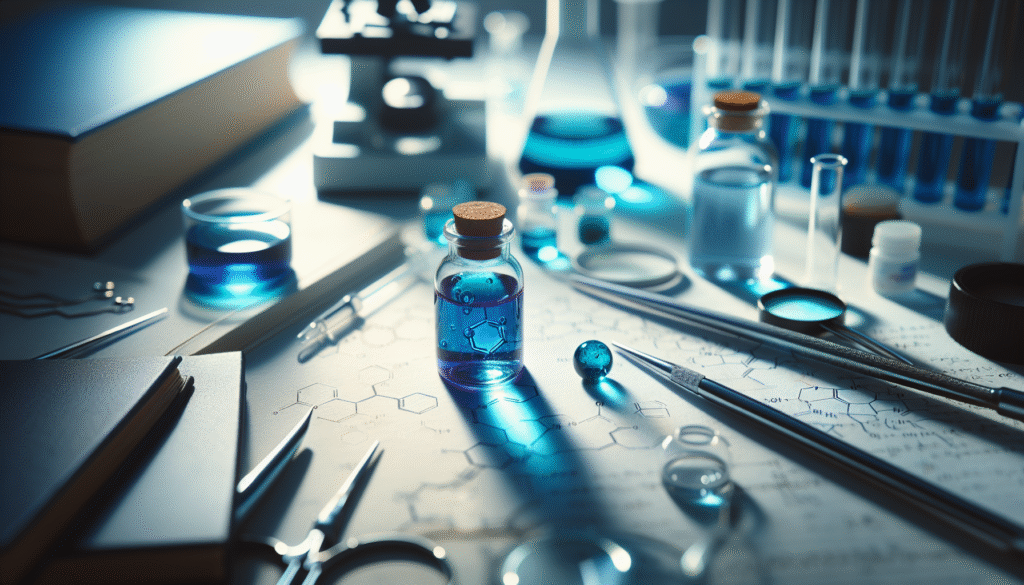
Have you ever wondered how a single chemical compound can have diverse applications across various scientific fields? Methylene Blue, a synthetic dye with a rich history, has proven to be an invaluable tool in numerous scientific domains. This article aims to illuminate the top ten applications of Methylene Blue in science, showcasing its versatility and significance.
What is Methylene Blue?
Methylene Blue is a thiazine dye that exhibits a vibrant blue color. Originally synthesized in the 19th century, this compound was initially used in the textile industry, but its potential quickly caught the attention of various scientific disciplines. With a molecular formula of C16H18ClN3S and the ability to act as a reducing agent, Methylene Blue has since found roles in biology, chemistry, medicine, and even environmental science.
Understanding the properties of Methylene Blue is crucial, as these attributes contribute to its broad application. It is soluble in water, has a high affinity for biological tissues, and can interact with cellular components, making it a valuable asset in experimental settings.
1. Antimicrobial Properties
One of the most notable applications of Methylene Blue is its antimicrobial properties. Research has indicated that Methylene Blue can effectively inhibit the growth of various pathogens, including bacteria and fungi. In laboratory settings, it is often employed in antimicrobial assays, demonstrating its efficacy as a potential treatment option for infections.
Mechanism of Action
Methylene Blue operates through photodynamic therapy (PDT), where it generates reactive oxygen species (ROS) upon exposure to light. These ROS can damage microbial cells, leading to their destruction. This mechanism has been extensively studied, and results continue to support Methylene Blue’s potential as an antimicrobial agent.
Clinical Implications
The application of Methylene Blue in treating infections, especially in cases resistant to standard antibiotics, has garnered significant attention. It holds promise for treating conditions like malaria and certain skin infections, expanding the arsenal of available therapies.

2. Staining Agent in Histology
In the realm of histology, Methylene Blue serves as a critical staining agent. Its ability to bind to cellular components makes it a vital tool for microscopy. Researchers utilize Methylene Blue to visualize various structures within cells, aiding in the detailed examination of tissues.
Preparing Tissue Samples
When preparing tissue samples, Methylene Blue can enhance cell visibility, allowing for better differentiation between types of cells and tissue types. This application is particularly valuable in academic and clinical laboratories, underscoring its importance in medical diagnostics.
Advantages Over Other Stains
While several stains are available, Methylene Blue stands out for its affordability, ease of use, and ability to produce clear contrast in samples. This makes it an attractive option for educational purposes as well.
3. Role in Neurobiology
Methylene Blue has been explored for its potential effects in neurobiology. Studies have suggested that it may possess neuroprotective properties, which can play a significant role in various neurodegenerative diseases.
Mechanism of Neuroprotection
The compound appears to enhance mitochondrial function and reduce oxidative stress within neurons. This is essential because many neurodegenerative disorders are characterized by mitochondrial dysfunction and elevated oxidative damage.
Research Findings
In laboratory studies, Methylene Blue administration has been linked to improved cognitive function in animal models. These findings underscore its potential therapeutic applications in treating conditions like Alzheimer’s disease, Parkinson’s disease, and other neurodegenerative disorders.

4. Applications in Photodynamic Therapy
Photodynamic therapy is a groundbreaking treatment for certain types of cancers, utilizing light-sensitive compounds like Methylene Blue. This therapy activates the dye in the presence of light, generating ROS that target and destroy cancer cells.
Mechanism
The process involves administering Methylene Blue and subsequently illuminating the area with specific wavelengths of light. The ROS produced selectively damage cancer cells while minimizing harm to surrounding healthy tissue.
Clinical Applications
Methylene Blue has shown promise in the treatment of specific cancers, particularly superficial tumors, including skin cancers. Research continues to refine this application, potentially leading to more widespread use in oncological therapies.
5. Use in Dye-Sensitized Solar Cells
Innovations in renewable energy have led scientists to investigate Methylene Blue’s role in dye-sensitized solar cells (DSSCs). As a photosensitizer, it can convert sunlight into electricity, offering an efficient alternative to traditional solar technologies.
Working Principle
In DSSCs, Methylene Blue absorbs light and facilitates electron transfer, contributing to the generation of electric current. This property has intrigued researchers as they seek sustainable energy solutions.
Advantages
Utilizing Methylene Blue in solar cells presents an eco-friendly and cost-effective approach, providing a potential pathway towards more affordable energy solutions.

6. Effects on Cellular Metabolism
Research into Methylene Blue has indicated significant effects on metabolic pathways within cells. By influencing mitochondrial activity, it can alter cellular respiration and energy output.
Impact on Cellular Respiration
Methylene Blue can enhance oxidative phosphorylation, the process by which cells generate ATP, the energy currency of the cell. Some studies suggest that it can improve energy metabolism, particularly under conditions of metabolic stress.
Implications for Research
This property allows scientists to utilize Methylene Blue to study metabolic disorders, diabetes, and other conditions where cellular energy production is compromised.
7. Potential Role in Treating Methemoglobinemia
Methylene Blue has been recognized for its therapeutic role in treating methemoglobinemia, a condition where hemoglobin is unable to effectively release oxygen to tissues. In such cases, Methylene Blue acts as a reducing agent, converting methemoglobin back to its functional form.
Clinical Application
The administration of Methylene Blue in acute cases can quickly reverse the symptoms of methemoglobinemia, making it a critical intervention in emergency medicine.
Dosage and Administration
Typically, Methylene Blue is administered intravenously, with careful monitoring of dosage to avoid potential side effects. This requires healthcare professionals to be well-versed in its applications and potential risks.

8. Implications in Aquatic Environmental Science
Within environmental science, Methylene Blue is often employed as a tracer dye in hydrology studies. Its properties make it a suitable tool for tracking water movement and assessing contamination in aquatic systems.
Application in Water Studies
Researchers can introduce Methylene Blue into water systems to visualize flow patterns and evaluate the dispersion of pollutants. This practical application is essential for developing effective strategies for water management and pollution control.
Environmental Considerations
Despite its utility, there are environmental implications to consider. Methylene Blue can be toxic to aquatic life at certain concentrations, highlighting the need for careful application in studies.
9. Applications in Molecular Biology
In molecular biology, Methylene Blue plays a role in nucleic acid staining and visualization. It can intercalate between DNA bases, allowing researchers to study genetic material with enhanced clarity.
Utility in Gel Electrophoresis
In gel electrophoresis, Methylene Blue helps visualize nucleic acid bands after separation. Its ability to bind with nucleic acids provides a precise method for analyzing DNA and RNA samples.
Advantages
The use of Methylene Blue does not require toxic ethidium bromide, making it a safer alternative for laboratory environments. Its efficacy as a nucleic acid stain opens doors for more expansive research possibilities.

10. Explorations in Psychiatry
Emerging studies have suggested that Methylene Blue may have therapeutic effects in psychiatry, particularly in the treatment of mood disorders. Its potential to modulate neurochemical systems has attracted attention from researchers.
Investigative Findings
Early research indicates that Methylene Blue might enhance mood by affecting neurotransmitter balance, including serotonin and dopamine pathways. These findings present an intriguing avenue for psychiatric treatment, particularly in pharmacotherapy.
Future Research Directions
Further exploration into Methylene Blue’s psychiatric applications is warranted. Continued clinical studies may reveal more about its efficacy, safety, and potential role in treating various mental health conditions.
Conclusion
The applications of Methylene Blue across scientific fields underscore its versatility and importance as a multifaceted compound. From its historical use in textile manufacturing to contemporary roles in medical treatments, environmental science, and technology, Methylene Blue continues to make significant contributions.
As researchers delve deeper into its potential, the scope of Methylene Blue’s applications is likely to expand, revealing new insights and therapeutic uses. Understanding its mechanisms and continuing to explore its capabilities enhances the scientific community’s ability to harness this remarkable compound for future advancements.
Call to Action
Consider reflecting on how a single chemical has woven itself into the fabric of so many scientific disciplines. Whether you are a student, a researcher, or a professional in the field, Methylene Blue invites you to think creatively about how such compounds can shape our understanding and improve our world. Explore the vast possibilities it offers, and stay curious about the boundless opportunities that lie ahead.